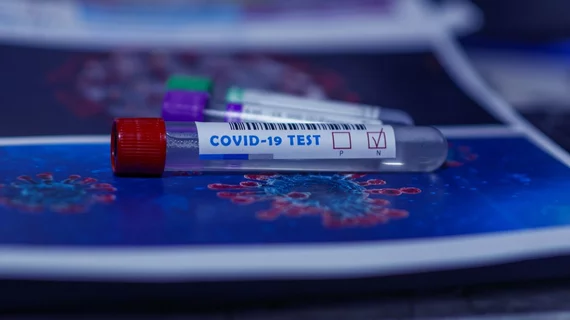Hospitalized COVID-19 patients face a much higher risk of death if they develop blood clots, according to a new meta-analysis published in EClinicalMedicine.
The researchers tracked data from 42 different studies—and more than 8,000 hospitalized COVID-19 patients—for their analysis. All studies were completed by June 12, 2020.
Overall, the venous thromboembolisms (TE) rate was 21%, pulmonary embolism rate was 13%, deep vein thrombosis rate was 20% and arterial TE rate was 2%. For ICU patients specifically, those rates were 31%, 19%, 28% and 5%, respectively.
In addition, 23% of patients with a TE and 13% of patients without a TE died. The pooled odds of dying from the infection was 74% higher for patients who developed a TE.
“We began to notice a really unusual manifestation of venous and arterial TE in patients with COVID-19,” lead author Mahmoud B. Malas, MD, division chief of vascular and endovascular surgery at UC San Diego Health, said in a statement. “In addition to higher instances of blood clots, the mortality for patients hospitalized for COVID-19 and with thromboembolism was much higher, compared to patients without clots. It’s unusual because we have never seen anything like this with other respiratory infections.”
Arterial blood clots are quite rare for patients with the seasonal flu, Malas added, and the research team’s findings indicate TE rates are much higher for COVID-19 than even the H1N1 influenza in 2009.
“The collective experience in the literature as captured in this meta-analysis study brings additional light on the importance of blood vessel clotting events in hospitalized patients with COVID-19,” co-author Bryan Clary, MD, surgeon-in-chief at UC San Diego Health, said in the same statement. “While the frequency of these events is much higher than expected, our study likely underestimates the incidence of thromboembolism in the global population of patients with COVID-19, including non-hospitalized patients.”
“We’re still in the process of understanding the pathophysiology of COVID-19, so it’s important to have a low index of suspicion when it comes to this infection to ensure we’re doing all we can to mitigate the spread and prevent severe outcomes,” Malas concluded.
The full study can be read here.

